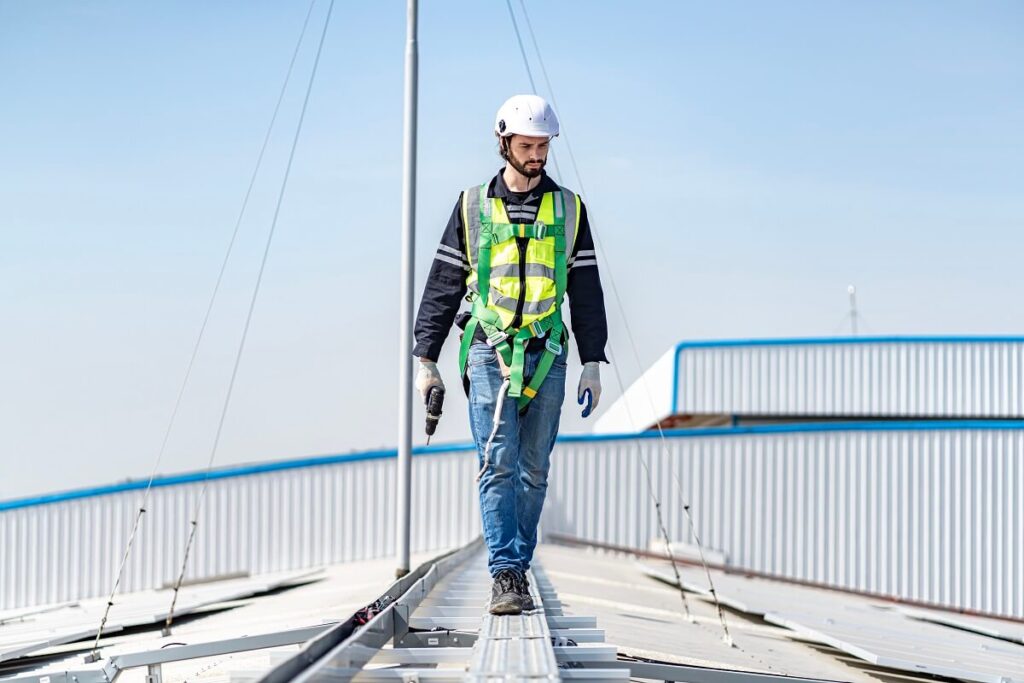Routine inspections are the foundation of effective commercial roof maintenance. Industry best practices recommend two inspections each year– once in the spring and once in the fall. A qualified roofing contractor will evaluate flashing, drainage, seams, and structural integrity, helping you spot early signs of deterioration while roof repair is still an option.
Clean Drains and Gutters
Clogged drains can lead to ponding water, which accelerates membrane breakdown and increases leak risk. Removing leaves, dirt, and debris from gutters and scuppers keeps water flowing off the roof efficiently. Standing water that remains after 48 hours needs to be addressed.
Protect High-Traffic Zones
Roof traffic from service personnel causes damage over time, particularly around HVAC units or solar equipment. Installing walk pads in frequently accessed areas reduces the compression of insulation and helps prevent membrane tears. Clear paths should be marked to direct movement across the roof surface.
Address Small Repairs Quickly
Even minor problems, like a lifted seam or cracked flashing, can lead to major water intrusion. Timely roofing repair prevents further damage to underlying materials and avoids costly structural impacts.
Use Preventive Measures
Integrating preventive maintenance into your facility plan will reduce long-term costs. These steps are simple but effective:
- Perform walk-throughs after major weather events
- Ensure rooftop equipment is securely mounted
- Replace worn sealants and caulking
- Schedule membrane cleaning
- Keep trees trimmed
Know When to Invest in a Roof Coating System
As a roof begins to age, applying a coating system can extend its service life. Reflective coatings reduce heat absorption, improve energy efficiency, and add an extra layer of protection against UV rays and water intrusion. Not all systems qualify for coatings, so consult your contractor to determine if the surface is in good enough condition.
Monitor Rooftop Equipment and Accessories
Leaks often occur around penetrations such as vents, ductwork, or cable entries. Equipment vibrations can shift flashing or create separation points. Ensuring that mounting hardware is stable and that seals are watertight will minimize unexpected leaks in mechanical zones. Trained technicians will report issues during routine inspections.
Document All Service and Repairs
Maintaining a log of inspections, repairs, and upgrades supports both warranty compliance and capital planning. When working with a certified roofing contractor, ask for service reports after every visit. These documents also help justify future budgeting for restoration or replacement, and they show due diligence in risk management.
Choose the Right Materials
Different regions demand different roofing solutions. Reflective membranes work well in hot climates, while reinforced systems may be better suited for regions with snow and ice. A contractor familiar with local weather patterns can guide you toward materials and installation techniques that offer the longest performance in your area.
By combining consistent care with expert insight, you reduce emergency costs and improve the reliability of your facility’s most important layer of protection. Ensure your roof performs at its best year after year. Contact Peak Roofing & Exteriors to create a maintenance plan, schedule seasonal inspections, and keep small issues from becoming big setbacks.

